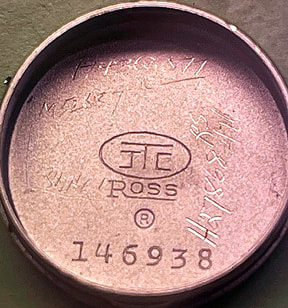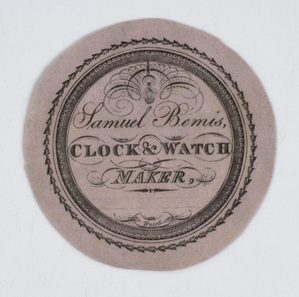|
One aspect of watch repair and restoration that often goes overlooked are the craftsmen and women that offered their services to a particular watch. Manufacturers get a lot of hype and some independent watchmakers make it to stardome, but what about the average repairman? Where’s their legacy? They are most often shrouded in the minuscule codes, lightly hand scratched in the back of a watch case. What are those scratches on the inside of a watch case-back? Over the years, many folks have asked me about these and the answer is simple… but often shrouded in mystery. In my 35 years or so as a professional watchmaker, I’ve serviced thousands of timepieces. Some of these date back into the early 1800’s. And many, if not all of these timekeepers, had a number of hand scratched insignia or code on the case protecting the movement, be it a wrist watch or a pocket watch. I’ve seen watches that have the same “signature” with coded dates offered three or more in a row, showing that the owner of the watch had the watch serviced by the same watchmaker many times over the years. Historically, with regards to pocket watches, many early repairmen would put a thin piece of paper in the back of a watch case as an advertisement, while also incidentally, protecting the case from rattling in its outer case. Having to open the watch case daily to wind the key- wound timepiece, the owner would no doubt have viewed this watch paper hundreds of times. On the reverse, the watchmaker would put an abbreviated notation of what was done to the watch. “℅” was for clean and oil. “BS” was for balance staff and “MS” for mainspring. And sometimes one might find the prices that the watchmaker charged the owner. When English and early American watches were housed in standardized cases and key wound watches lost favor to stem wound watches, using paper in the backs of watch cases faded and short codes were scratched into the case-back of pocket watches. Some of these were issued by the American Watch and Clockmakers Institute, and others were of their own design.
For nearly 30 years, I’ve simply put my initials along with the month and year. Others still use the code that they were offered by one institute or something that they simply devised themselves. It would offer the watchmaker a reference as to when he last serviced the watch. Now, with computer based record keeping, the need for a scratched insignia is not so necessary. In fact, in the last 10-15 years, I’ve seen numerous Rolex watches with the “Sharpie” insignia, TXRLX, meaning the Rolex service center in Dallas, Texas. In the last year or two, I’ve come across signatures from a watchmaker I know (and have gone fishing with) from Portland. I try my best to keep my signature small and unobtrusive, but I like the fact that my horological “graffiti tag” might someday be noticed. I’ve seen a handful of watches that I serviced 10-20 years ago. It’s kind of like seeing a distant friend again. Hopefully, a watchmaker in 50 years or so might see my signature and acknowledge my workmanship and not look down upon it but only see the restorative skills that I’ve offered the watch to bring it back to working condition. |
AuthorArchives
May 2024
Categories |




 RSS Feed
RSS Feed